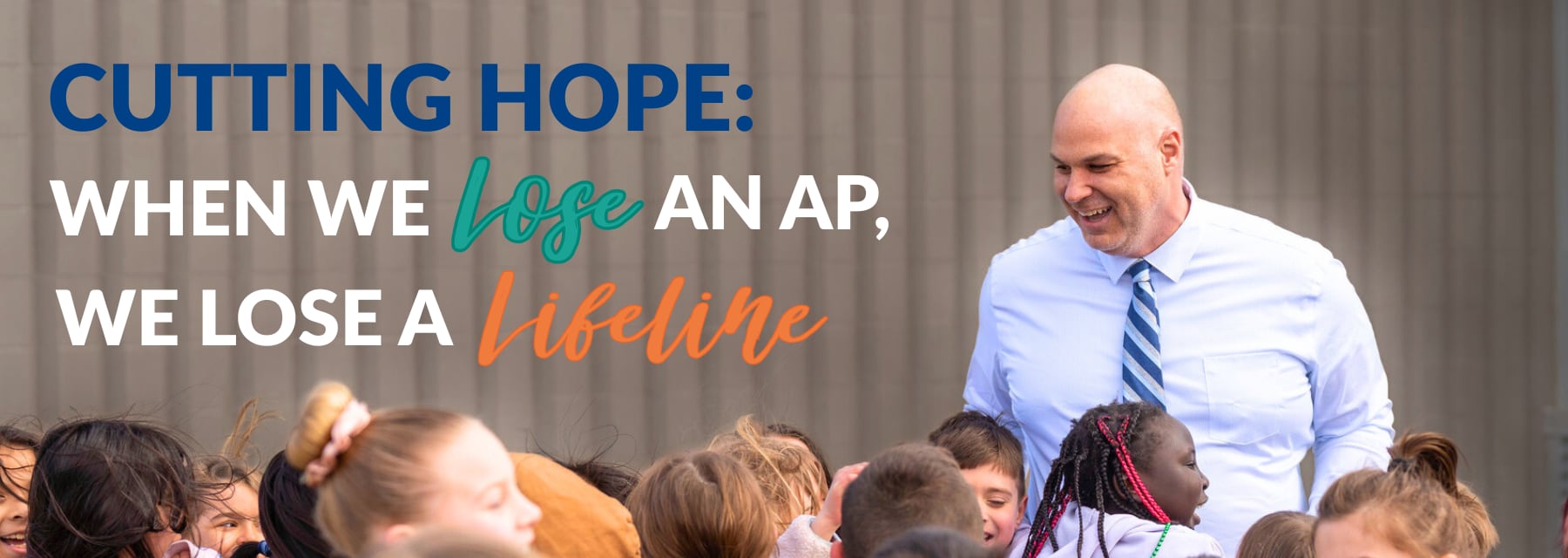
It’s that time of year when financial uncertainty manifests into one of the most disheartening and hope-crushing decisions I see across the educational landscape: the decision to cut assistant principals. Usually with no collective bargaining protections
and little seniority, APs are often the first to go. Nobody thinks cutting APs is a good idea, but rather a move necessitated by numbers. In this case, the numbers on a district’s balance sheet.
What Do Assistant Principals Do?
Assistant principals are student-centered beacons of hope in our school system. APs are unencumbered by specific certification requirements and truly serve as one of the greatest multi-tools in our schools. They can do anything and are often the ones
leading systems changes like MTSS, PBIS, attendance initiatives, and community engagement. That flexibility of talent, skill, passion for kids, and scope of responsibilities is what makes our APs have the greatest impact on numbers; in this case,
the numbers of students who have a trusted adult and are seen, heard, and valued in school.
Assistant principals usually serve our students with the greatest needs. When students are facing adversity, personal problems, conflict, decision-making issues, disengagement, addiction, loss of hope, etc., who is quite often the first adult responding
to the calls for help? Assistant principals; the same position and resource, especially at the elementary level, we frequently cut first.
So, when it’s time to look at the numbers and make some decisions, can we talk about the number of lives changed every day because of our APs? Can we talk about the number of students who come to school regularly because of our APs? Can we talk
about the number of schools that maintain a positive school culture because of our APs? Can we talk about the number of kids who feel physically, mentally, and emotionally safe because of our APs? Can we talk about the number of tragic events averted
because of our APs? Can we talk about the number of teachers who feel supported so they can focus on teaching and learning because of our APs? And can we talk about the number of parents who feel connected to our schools because of our APs? We can’t
forget about these numbers.
We Need More Dr. Wests, Not Less
For example, take our newly named 2025 Elementary Assistant Principal of the Year, Dr. James West, at Cascade Elementary in the Kennewick School District. Take a few minutes to watch this heartwarming video about Dr. West and his impact.
Who did the kids say made them feel safe and welcomed (and the teachers, too, for that matter)? Who do the kids go to when they need help or want to share? Who helps build culture and community? Together, Dr. West and principal Dr. Julie Nelson provide
hope and support. I know the students, staff, and community, as well as Dr. Nelson, can’t imagine a Cascade Elementary without Dr. West.
Or let’s talk about our Secondary Assistant Principal of the Year, Terry Jess, at Juanita High School in the Lake Washington School District, who is eliminating bad-for-kids systems and replacing them with hope-filled and student-centered replacements.
Terry has made ideas, visions, and programs come alive for Juanita’s teachers, counselors, fellow APs, and principal, Kelly Clapp, all things that would have been left on the drawing board without his leadership and capacity.
While Dr. James West and Terry Jess are exceptional leaders and deserve all their recognition, there are examples like them in every district across our state. Our state is blessed with phenomenal APs who are relationship builders and change makers.
It seems incredibly counterproductive to say we value safe, positive, and inclusive schools while cutting one of the primary resources and key contributors to the school’s culture, relationships, and safety. Given their importance, you’d
think APs would be one of the last things we’d cut.
Back to the Numbers
What does a school of 700 students without an assistant principal look like? What will the number of office referrals look like? What will the number of fights and suspensions look like? What will the number of student and staff attendance issues
look like? What will the number of parent complaint calls look like? What will the number of disenfranchised students look like? What will the numbers say in the perceptual survey data from students and staff about a safe and positive school environment?
When a school loses an assistant principal, then the principal takes on even more burden and responsibility. The principal faces the daunting task of leading a school without the support of an AP. We’ve heard from many principals who wonder
if they can ensure a safe school and learning environment without their AP.
We are already grappling with the number of principals carrying the load without an AP. That’s one of many factors leading to high principal turnover rates, which, according to this December 2023 UW policy brief, is higher than teacher turnover. We are also dealing with large numbers of principals leaving the role because of the workload. These are alarming numbers. Imagine what those numbers
will look like if we continue cutting APs across the system.
These are just a few examples of the numbers I wish we were talking about as we make financial decisions. Many of the pressures on district budgets are beyond their control; however, we sometimes paint ourselves into a corner as we agree to decisions
that are not financially sustainable. Budget cuts are hard. They impact real people and have real consequences for both the adults and students in the system. I don’t envy any superintendent who has to decide on what or who gets to stay
and what or who has to go. I just want us all to remember the multiplying effect of our APs because when we cut them, we’re also cutting our most precious resource: hope.